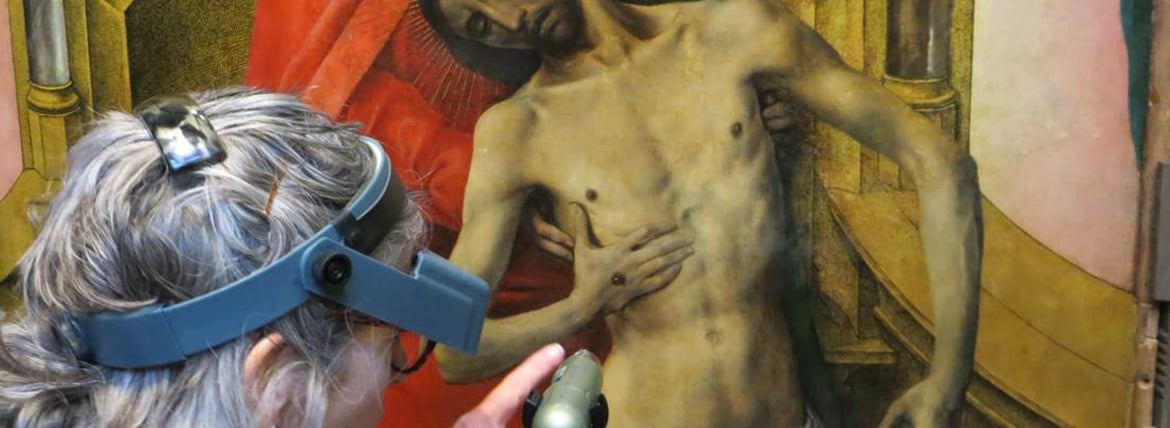The Trinity Panels by Hugo van der Goes

Painted by Hugo van der Goes around 1475, the Trinity Panels are one of the greatest works of early Netherlandish painting in Britain.
The four panels are thought to be the wings of a triptych and the missing centre panel may have depicted a ‘Virgin and Child with Angels’. The open triptych would therefore have shown James III of Scotland (accompanied by his son James, presented by St Andrew) and Margaret of Denmark (presented by another saint, probably St George) before the Virgin, while the closed triptych would have shown the Trinity (God, Christ and the Holy Spirit in the form of a dove) worshipped by the donor Edward Bonkil.
Edward Bonkil came from a family of Edinburgh merchants who traded with the Low Countries and became Provost of the Collegiate Church of the Holy Trinity in Edinburgh at the time of its foundation in 1462. He died in 1496.
The attribution of the panels to Van der Goes, first proposed in 1833, has come to be universally accepted. Van der Goes was inspired by the work of Van Eyck, and there are references here to his work, particularly in the figure of St George and the angel paying the organ.
The panels were apparently commissioned after 1473, when the Prince was born, and perhaps before 1478, when the Queen gave birth to a second son. They would have been completed by 1482, when Van der Goes died.
The survival of the two wings is extraordinary and the Trinity and Bonkil images must have been hidden from view during the Reformation. An x-ray detail on the left showing damages scored into the paint above God the Father’s head; it is most probable that this was an iconoclastic attack although curious that there is no deliberate damage to the face.
This is just one of the tantalising details that have been revealed about the painting following Initial investigation of the panels.
Read on to find out more.







